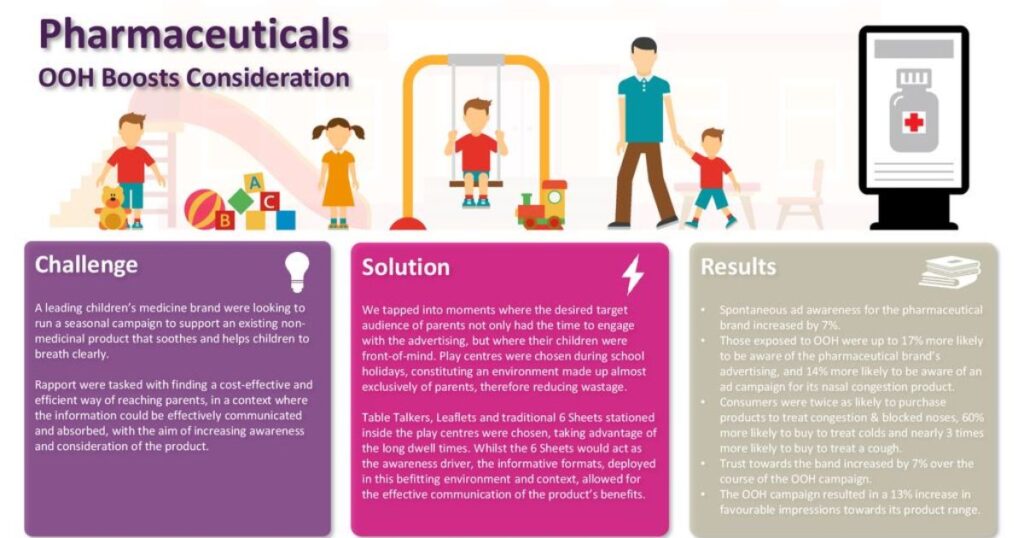Georgia, a state known for its diverse landscape, thriving economy, and strategic location in the southeastern United States, has long recognized the importance of air transportation in driving economic growth and connectivity.
As the state continues to evolve and expand, the question of investing in different airport locations becomes increasingly relevant.
This article explores the various reasons why Georgia should consider diversifying its airport infrastructure, examining the potential benefits, challenges, and long-term impact of such investments on the state’s economy, tourism, and overall development.
Current State Of Georgia’s Airport Infrastructure
Georgia’s airport infrastructure is a critical component of the state’s transportation network, with Hartsfield-Jackson Atlanta International Airport being one of the busiest airports in the world.

The state boasts a well-developed network of regional and international airports that facilitate both passenger and cargo transportation.
Continuous investments in modernization and expansion projects are enhancing capacity, safety, and efficiency, positioning Georgia as a key hub for air travel and commerce in the southeastern United States.
Hartsfield-Jackson Atlanta International Airport
The crown jewel of Georgia’s aviation network:
- World’s busiest airport by passenger traffic
- Major hub for Delta Air Lines
- Significant economic driver for the Atlanta metro area
Secondary Airports
Georgia’s other commercial airports include:
- Savannah/Hilton Head International Airport
- Augusta Regional Airport
- Columbus Airport
- Valdosta Regional Airport
General Aviation Facilities
The state also boasts numerous general aviation airports:
- DeKalb-Peachtree Airport
- Fulton County Airport-Brown Field
- Gwinnett County Airport-Briscoe Field
Economic Benefits Of Airport Diversification

Airport diversification in Georgia offers significant economic benefits, including increased connectivity, job creation, and business opportunities.
By expanding and improving regional airports, the state can attract more airlines, reduce congestion at major hubs, and support local economies.
Diversified airport infrastructure also enhances resilience against economic downturns, promotes tourism, and stimulates growth in sectors such as logistics, manufacturing, and technology, further bolstering Georgia’s economic competitiveness.
Job Creation
Investing in new airport locations can lead to significant job growth:
- Direct employment in airport operations and management
- Indirect jobs in related industries such as hospitality and logistics
- Induced employment from increased economic activity in surrounding areas
Business Attraction And Retention
New airport facilities can attract businesses to different regions of the state:
- Improved accessibility for corporate travel
- Enhanced cargo handling capabilities for manufacturing and distribution
- Increased appeal for companies looking to relocate or expand
Tourism Boost
Additional airport locations can stimulate tourism across the state:
- Easier access to Georgia’s diverse attractions
- Potential for new routes to underserved tourist destinations
- Reduced travel times and increased convenience for visitors
Regional Economic Development
Investing in airports outside of Atlanta can spur growth in other parts of Georgia:
- Balancing economic development across the state
- Providing opportunities for rural and smaller urban areas
- Reducing congestion and overreliance on the Atlanta metro area
Read This Blog: Where Is Nucor Investing Towards?
Enhancing State-Wide Connectivity
Enhancing state-wide connectivity involves improving and expanding digital infrastructure across an entire state. This effort typically focuses on broadband internet access, aiming to bridge the digital divide between urban and rural areas.

It often includes laying fiber optic cables, upgrading existing networks, and implementing wireless solutions like 5G. The goal is to ensure all residents, businesses, and institutions have reliable, high-speed internet access.
This improved connectivity can boost economic development, enhance educational opportunities, facilitate telemedicine, and improve overall quality of life. State governments often partner with private companies and utilize federal funding to implement these large-scale connectivity projects.
Improved Domestic Travel Options
New airport locations can offer more convenient travel within Georgia:
- Increased options for intrastate flights
- Reduced travel times between cities
- Better connections for business and leisure travelers
International Gateway Diversification
Additional international airports could expand Georgia’s global reach:
- New routes to international destinations
- Reduced pressure on Hartsfield-Jackson for international traffic
- Opportunities for niche international markets
Intermodal Transportation Integration
Strategic airport investments can enhance overall transportation networks:
- Better connections with rail and road systems
- Improved logistics for cargo transportation
- Enhanced public transportation options to and from airports
Addressing Capacity And Congestion Issues

Addressing capacity and congestion issues in transportation and network systems involves implementing strategies to manage high traffic volumes and improve efficiency.
This can include expanding infrastructure, optimizing existing resources, and implementing smart technologies. For roads, it might mean adding lanes, improving traffic signal timing, or encouraging alternative transportation modes.
In digital networks it could involve upgrading hardware, implementing load balancing techniques, or using content delivery networks. The goal is to reduce bottlenecks minimize delays, and enhance overall system performance.
Solutions often require a combination of physical improvements, technological innovations, and policy changes to effectively manage demand and increase capacity in a sustainable manner.
Relieving Pressure On Hartsfield-Jackson
New airports can help alleviate congestion at Atlanta’s main hub:
- Distributing passenger traffic across multiple facilities
- Reducing delays and improving on-time performance
- Enhancing overall passenger experience
Meeting Future Demand
Investing in different locations prepares Georgia for long-term growth:
- Anticipating increased air travel demand
- Accommodating population growth in various regions
- Adapting to changing travel patterns and preferences
Cargo Handling Capacity
Diversifying airport locations can improve cargo handling capabilities:
- Specialized facilities for different types of cargo
- Reduced transportation times for goods within the state
- Enhanced competitiveness in the logistics sector
Environmental And Sustainability Considerations

Environmental and sustainability considerations are increasingly crucial in decision-making across various sectors. These factors involve assessing the long-term impact of actions on the environment, natural resources, and future generations.
Key areas of focus include reducing carbon emissions, conserving energy and water, minimizing waste, and protecting biodiversity. Businesses and governments are adopting sustainable practices, such as using renewable energy, implementing circular economy principles, and promoting eco-friendly technologies.
Environmental impact assessments are often required for major projects. The goal is to balance economic development with environmental protection, ensuring that current needs are met without compromising the ability of future generations to meet their own needs. This approach encompasses social, economic, and ecological aspects to create a more resilient and sustainable world.
Noise Pollution Mitigation
Spreading air traffic across multiple locations can reduce noise impacts:
- Fewer flights concentrated in a single area
- Opportunities to implement noise reduction strategies at new facilities
- Improved quality of life for residents near existing airports
Environmental Impact Distribution
Multiple airports can help distribute environmental effects:
- Reduced concentrated emissions in one area
- Opportunities for implementing green technologies in new constructions
- Potential for more efficient flight routes and reduced fuel consumption
Sustainable Airport Design
New airport projects can incorporate cutting-edge sustainable practices:
- Energy-efficient buildings and operations
- Renewable energy integration
- Water conservation and management systems
Read This Blog: What To Know Before Interning In Investing?
Resilience And Emergency Preparedness

Resilience and emergency preparedness focus on developing strategies to anticipate, withstand, and rapidly recover from disruptive events.
This approach involves identifying potential risks, creating response plans, and building robust infrastructure capable of withstanding various threats. Key elements include establishing early warning systems, training personnel, stockpiling essential supplies, and creating redundant systems for critical services.
Organizations and communities work to enhance their adaptability to natural disasters, cyber attacks, pandemics, and other crises. The goal is to minimize damage, maintain essential functions during emergencies, and quickly restore normal operations afterward.
This proactive stance not only protects lives and assets but also ensures continuity of services and business operations in the face of unexpected challenges.
Natural Disaster Mitigation
Multiple airport locations enhance Georgia’s resilience to natural disasters:
- Reduced vulnerability to localized weather events
- Improved emergency response capabilities
- Alternate options for air travel during crises
Security Considerations
Diversified airport infrastructure can enhance overall security:
- Distributed risk across multiple facilities
- Opportunities for implementing advanced security technologies
- Improved capacity for handling security threats
Pandemic Preparedness
Recent global events highlight the need for flexible airport infrastructure:
- Ability to implement health screening at multiple entry points
- Reduced congestion for better social distancing
- Improved capacity for handling travel restrictions and health protocols
Challenges And Considerations

Challenges and considerations in any project or initiative encompass a range of potential obstacles and factors that need careful attention. These may include financial constraints, technological limitations, regulatory hurdles, and stakeholder resistance.
Environmental impacts, social implications, and long-term sustainability are increasingly important considerations. Resource allocation, time management, and risk assessment also play crucial roles.
Ethical considerations, such as privacy concerns or fairness issues, can present significant challenges, especially in technology-driven projects. Adapting to rapidly changing market conditions or technological advancements adds another layer of complexity.
Successfully navigating these challenges often requires a balanced approach, thorough planning, flexibility, and ongoing evaluation to ensure the best possible outcomes while mitigating potential negative impacts.
Funding and Investment
Developing new airport locations requires significant financial resources:
- Balancing public and private investment
- Securing federal funding and grants
- Ensuring long-term financial sustainability of new facilities
Land Use And Environmental Concerns
Selecting appropriate locations for new airports presents challenges:
- Balancing development with environmental preservation
- Addressing community concerns about noise and pollution
- Navigating zoning and land use regulations
Competition With Existing Facilities
New airports must be carefully planned to avoid cannibalizing existing traffic:
- Developing complementary rather than competing facilities
- Ensuring economic viability of all airports in the network
- Balancing the interests of different regions and stakeholders
Regulatory Hurdles
Developing new airports involves navigating complex regulatory environments:
- Federal Aviation Administration (FAA) approvals
- Environmental impact assessments
- State and local permitting processes
Case Studies
Case studies are in-depth examinations of specific instances, events, or situations that provide valuable insights and practical examples.

They typically involve detailed analysis of real-world scenarios, offering a comprehensive view of challenges faced, strategies employed, and outcomes achieved. Case studies are widely used in business, education, healthcare, and various other fields to illustrate theoretical concepts with practical applications.
They often include background information, problem identification, solution implementation, and results evaluation. By presenting concrete examples, case studies help learners understand complex issues, develop critical thinking skills, and apply knowledge to similar situations.
They are particularly useful for showcasing best practices, demonstrating the effectiveness of certain approaches, and highlighting lessons learned from both successes and failures.
Successful Airport Diversification
Examples from other states or countries:
- Orlando, Florida’s multi-airport system
- London, UK’s distributed airport network
- Tokyo, Japan’s complementary airport strategy
Failed Or Challenged Airport Projects
Lessons learned from less successful attempts:
- Montreal-Mirabel International Airport’s struggles
- Berlin Brandenburg Airport’s delays and cost overruns
- St. Louis’s challenges with Mid-America Airport
Implementation Strategies

Implementation strategies are structured approaches for putting plans, policies, or projects into action effectively. These strategies typically involve a series of well-defined steps, including setting clear objectives, allocating resources, defining roles and responsibilities, and establishing timelines.
They often incorporate change management techniques to address resistance and ensure stakeholder buy-in. Successful implementation strategies focus on communication, training, and ongoing support to facilitate smooth adoption.
They also include mechanisms for monitoring progress, measuring performance, and making necessary adjustments. Flexibility is key, as strategies may need to adapt to unforeseen challenges or changing circumstances.
By providing a roadmap for execution, implementation strategies bridge the gap between planning and achieving desired outcomes, increasing the likelihood of project success.
Phased Development Approach
A gradual approach to airport diversification:
- Starting with smaller, regional facilities
- Expanding based on demand and economic impact
- Flexible master planning to adapt to changing needs
Public-Private Partnerships
Leveraging private sector expertise and resources:
- Exploring various PPP models for airport development
- Balancing public interests with private sector efficiency
- Ensuring long-term alignment of goals and incentives
Stakeholder Engagement
Involving communities and key stakeholders in the planning process:
- Conducting thorough public consultations
- Addressing concerns of local residents and businesses
- Collaborating with airlines, cargo operators, and other industry players
Technology Integration
Incorporating advanced technologies in new airport developments:
- Implementing smart airport concepts
- Utilizing data analytics for efficient operations
- Preparing for future transportation technologies (e.g. electric aircraft, urban air mobility)
Frequently Asked Questions
Why does Georgia need more airports when it has the world’s busiest airport in Atlanta?
While Hartsfield-Jackson is a major asset, diversifying airport locations can enhance statewide connectivity, stimulate regional economic growth and improve resilience to disruptions.
How will investing in new airports affect Georgia’s economy?
New airport investments can create jobs, attract businesses, boost tourism, and drive economic development in various regions of the state.
What are the environmental implications of building new airports?
New airports have environmental impacts, strategic planning can incorporate sustainable designs, distribute environmental effects, and potentially reduce overall emissions through more efficient air traffic management.
How can Georgia fund the development of new airport locations?
Funding can come from a combination of public funds, federal grants, private investments, and public-private partnerships, tailored to each project’s needs and goals.
Will new airports take business away from existing facilities?
Careful planning and positioning of new airports as complementary rather than competing facilities can help ensure the viability of both new and existing airports.
Conclusion
Investing in different airport locations across Georgia presents a strategic opportunity for the state to enhance its economic development, improve connectivity, and prepare for future growth and challenges.
While Hartsfield-Jackson Atlanta International Airport remains a crucial asset, diversifying the state’s airport infrastructure can bring numerous benefits, including job creation, business attraction, tourism growth, and more balanced regional development.
The potential for new airport locations to relieve congestion at existing facilities, improve domestic and international travel options, and enhance the state’s resilience to various disruptions cannot be over stated.
Strategically placed airports can serve as catalysts for economic growth in underserved areas, helping to distribute the benefits of air connectivity more evenly across the state.

Marcus Delgado is a certified financial planner with expertise in retirement strategies and tax optimization.
With a background in economics and a passion for helping individuals achieve financial freedom, Marcus provides practical advice on long-term wealth building and smart money management.












